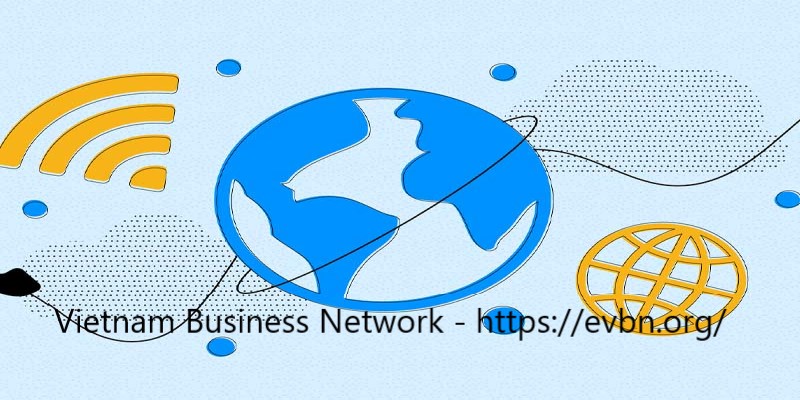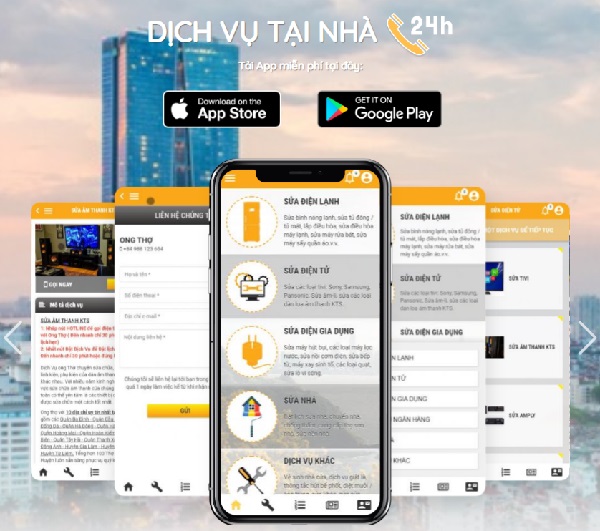What is Enterprise Content Management?
Spread The Love
Enterprise content management (ECM) is the heart of modern business operations, where valuable information is stored, managed, and made accessible to organizations. With ECM, companies can streamline their processes, improve collaboration, and make informed decisions by harnessing the power of their data. Get ready to transform the way you work and unlock new levels of efficiency and productivity with ECM!
Enterprise Content Management (ECM) is a set of processes, technologies, and strategies used to manage an organization’s unstructured and structured content, from creation to deletion. It includes storing, organizing, and retrieving information, as well as ensuring its accessibility, security, and compliance with regulations.
ECM is an umbrella term that covers documents, records, workflow, collaboration, web content management, DAM, imaging, and archiving. Its purpose is to address the challenges faced due to the rise of different types of data, the surging volume of information within organizations, and the preservation of all organizations’ data in all forms.
In summary, ECM was and will always be the core of enterprise information management.

Mục Lục
What are the components of enterprise content management?

There are five basic components of enterprise content management: capture, manage, store, preserve, and deliver. Each component plays an important role in managing and controlling enterprise content.
1- Capture
The capture component involves producing information by converting paper documents to electronic forms, getting and assembling electronic data into a logical structure, and organizing information. Invoices, contracts, and research reports are examples of information.
Managing information begins with the process of importing them into a secure digital repository to fuel applications and processes using a variety of methods.
- Automated, high volume scanning (Multi-function device, Mobile cameras) and automatic extraction of metadata from scanned documents.
- Enterprise document Imaging (Tiff, JPEG, PDF, GIF).
- E-forms / Webforms.
- Forms Processing: Capture of paper forms through scanning or using electronic forms.
- Recognition using world-class OCR.
- Typed, Handwriting Recognition.
- Indexing & Classification.
- Bar Code.
- Integration with MS Office, Email (including attachments), and Office365.
- Integration with well-known line-of-business applications used within your organization.
Check out the article below for a more in-depth look into data capture.
What Is Data Capture and Why It Is Important? (theecmconsultant.com)
2- Manage
The Manage component involves the tools and techniques for moving information across an organization.
Connects and makes use of information through methods used separately or in combination.
3- Store
Where do you put your information and how would you find it again?
The temporary storage of frequently changing information within a dynamic hierarchy structure. Users will be able to view or edit any document and view enterprise document properties.
4- Preserve
The methods for long-term archival & storage of the needed data.
Storage and backup of unchanging data for the long term are typically achieved using records administration functionalities. This will help in enterprise content governance & compliance with different industrial & governmental regulations.
Check out the article below for a more in-depth look into archiving.
What is Archiving: Why is it Important? (theecmconsultant.com)
5- Deliver
How do deliver information to the right people at the right time through the proper channel?
Enterprise Content Management Real Life Examples
Real-world examples of enterprise content management (ECM) include digitization, document management, governance and compliance, case management, and knowledge management.
Let’s take a closer look at the top three examples.
1- Digitization
Digitization refers to the act of transforming anything non-digital into a digital representation that computer systems may utilize to automate operations or workflows.
Digitized information is easier to store, retrieve, and distribute, and it is the focal point for businesses to get the most out of information.
Scanners take digital images from paper documents throughout the digitization process, and the ECM system organizes them into coherent structures, extracting information and classifying material based on document titles, extracted information, and other metadata.
2- Document Management
Document management is an essential component of any company and a critical component of any successful business plan. It may not be the most interesting component of your business, but getting your documentation strategy wrong may result in lost employee hours, non-compliance, and extra administration.
11+ Critical Document Management Challenges and Solutions (theecmconsultant.com)
Employees may control the whole lifespan of a document version and eventually prohibit access to documents to unauthorized workers by using an ECM system, which provides a comprehensive audit trail report on all actions occurring on a document.
3- Governance & Compliance
Noncompliance with government and industry laws may result in significant financial fines, company disruption, ruined reputations, and, in certain cases, jail terms in regulated areas such as healthcare, pharmaceutical, and energy.
ECM provide capabilities such as records management, retention management, destruction, eDiscovery, and audit trails to assist enterprises in meeting governance and compliance laws.
Who Should Be Using ECM?
Any medium to the large organization should use enterprise content management (ECM) to manage the entire lifecycle of its content and documents. Most businesses recognize the need for a strategic enterprise content management (ECM) solution after identifying an overall business difficulty, such as dealing with too much paper or unstructured data, which causes bottlenecks when attempting to process, retrieve, or store the data.
When dealing with a medium to a significant amount of documents, regardless of industry, you need to have an overarching ECM strategy to specify how documents and information should be managed.
Why is Enterprise Content Management Important?
The benefits of enterprise content management extend well beyond merely keeping track of where records are stored.
For a full list of benefits, I highly recommend checking the below article
11 Reasons To Be Excited About ECM Benefits (theecmconsultant.com)
Let’s look at how enterprise content management may help your company
Increased Productivity
Productivity is directly related to the effectiveness of an organization’s internal processes. Document-centric processes can be found in all departments (Human Resources, Accounting) across your organization.
Employees spend 1.8 hours every day searching and gathering information. On average, that’s 9.3 hours per week!
McKinsey report
Imagine how much time is being wasted on the organization level just searching for information.
Effective Document Control
Managing enterprise content should be all about quality, accuracy, and up-to-date information.
ECM assists organizations in implementing an effective document control process to aid in managing the flow of information and providing accurate information to the required stakeholders to drive the organization’s quality function.
Reduce Storage and Operational Costs
For an average business, enterprise document volume doubles every 3 years, which equates to an annual paper increase of 22%.
By going digital, organizations will be able to reduce the number of papers and physical storage space. Filing, mailing, and storage costs will all be minimized as a result.
Minimize Risks
With the security capabilities available, organizations will be able to minimize data breaches and lower the possibilities of information falling in the wrong hands by controlling enterprise document access and authority.
Enterprise content governance & compliance requirements for certain types of documents are mandatory. Failing to adhere to different regulatory regulations can cost your organization huge fines and in some cases legal actions.
A successful enterprise content governance & compliance approach would help the company avoid non-compliance with various regulatory standards such as HIPPA and GDPR.
Automate Document-Driven Process
Automating repetitive tasks (photocopying, delivery of paper documents) will allow employees to focus on high-value and more important tasks. Using BPM capabilities, organizations can automate document-driven workflows which will increase workplace efficiency.
Better Decision Making
When we make use of the organization’s information and having it available at the right time to the right audience, better and faster decisions can be taken which will increase the ability to efficiently take advantage of important opportunities.
The benefits of having enterprise content management in a company are endless. Using the proper solution can help your organization achieve the above-stated benefits and even more!
Improve Customer Service
When allowing instant access to information, you can get real-time insights about different requests and transactions from your customers. Thus, allowing you to effectively and quickly respond to your customer’s need.
Customer satisfaction is an important performance driver for all businesses. ECM systems can assist in automating customer-related processes and responding to their requests in real-time, increasing their engagement and satisfaction.
Universal Access To Information
Employees must have access to their documents at all times. They should not be unable to access information when on business trips, holidays, or working from home. Organizations will lose time and resources if they do not have direct access.
Employees will be able to view their documents using laptops, tablets, or smartphones as part of their work tasks thanks to these tools.
Enterprise Content Management Features
ECMS provides tons of features to help manage your digital content throughout your organization.
Below is the list of the top features
Document Management

This will help organizations to manage the complete content life cycle, from capture to preservation.
Check-in/out: The ability to lock a document when being edited. In addition to allowing the creation of new versions, and keep the history of what was changed and by whom.
Security & Access Control: Role-based security and other security features like access control, audit trails, integration with active directory, file & data encryption, backup, document watermarking, digital right management.
Search & retrieval: Easily locate documents based on properties or FTS. Additionally, the solution should provide an advanced search mechanism.
Version control: Automatic version management, ability to see the list of versions, and rollback. The solution will make sure that employees are working on the latest version.
Indexing & Classification: Document indexing is the process of associating the information with tags allowing for easier retrieval.
Document classification is the act of labeling documents into categories according to their content (drawings, financial reports, contracts, or agreements).
Audit Trails: Complete history or log of any activity being performed on a document such as creation, modification, deletion, and so forth.
Multiple Capture Methods: Scanning (Multi-function device, Mobile cameras), Document Imaging (Tiff, JPEG, PDF, GIF), Forms Processing, Recognition using world-class OCR, Bar code.
Administration: Ability to manage all your enterprise content, security, document types, and search using one portal.
Business Process Management

The business process management module will give your organization the ability to start automating vital processes with an ultimate goal of improving accountability, productivity, and efficiency.
The solution should provide the ability to automate business processes using low code business process automation capabilities.
- Visual Workflow Designer: The ability to model your organizations’ internal processes without the need to be an IT expert (low code).
- Visual Form Designer: Business experts can design their forms to collect information and drive a specific process without the need for any programming skills.
- Responsive Design: Forms should auto-align based on the running environment like desktop internet browser, mobile & tablet browsers.
- Administration: Powerful administration to monitor processes, restart, and publishing workflows.
- Business rule engine
Check out the below article for more information
BPM Lifecycle: 5 Stages to Business Process Excellence (theecmconsultant.com)
Improved & Secure Collaboration
Sharing documents internally (between departments) or externally (clients, subcontractors, suppliers) is a common day-to-day task in any organization.
In fact, most companies are still relying on email and cloud solutions to improve collaboration between employees.
However, this poses a lot of concerns including the possibility of losing track of what was shared, commented, and the correct document version to review. In addition to the security risk of having the document sent to unauthorized persons.
The collaboration module is a very essential component as it allows users to work on the same document in one controlled environment. Making sure that employees are working on the latest version of the document.
Check out the in-depth article below covering more about document collaboration
What is Collaboration: Why Is It Important? (theecmconsultant.com)
Records Management
The tools should support both retention and disposition of information, allowing organizations to define, manage and execute records and retention policies for all enterprise content from a single application.
Records Management and retention policies help control the creation, declaration, classification, retention, and destruction of content and business records. As a result, the organization will benefit from improved compliance, minimized litigation risks, and lower storage costs.
Check out the below article covering
8 Tips For Effective RECORDS MANAGEMENT (theecmconsultant.com)
Integration with Existing IT Systems
Think about how many applications you use in your day-to-day work-related activities, be it MS Office including office365, outlook, HR, CRM, ERP, etc. The solution should be able to integrate with most of these line of business solutions to facilitate the reachability of information.
Does Enterprise Content Management Have A Future?
The future of enterprise content management is bright, but not without challenges. New data sources are being introduced as technology advances. Data may be gathered from nearly any piece of hardware that is linked to the internet using the Internet of Things (IoT). This will drive strategies and solutions to develop in order to solve the new problems that businesses face when it comes to information management.
The system will need to leverage new technological advancements to address new demands. To name a few:
- Automation and machine learning will provide new methods to capture (document metadata extraction), automatic document classification, and index information.
- Blockchain technology can help in smart contracts, advanced security, and automated payment processes.
- IoT is going to be part of every business aspect. Vendors should have IoT integration to add greater value to organizations.
Sources
Wikipedia















![Toni Kroos là ai? [ sự thật về tiểu sử đầy đủ Toni Kroos ]](https://evbn.org/wp-content/uploads/New-Project-6635-1671934592.jpg)


